ROSES AND RUINS: MOTTISFONT ABBEY
- Sarah
- Mar 11, 2021
- 7 min read
Updated: Mar 20, 2022
Mottisfont Abbey in Hampshire is a Grade 1 listed building hidden deep in the English countryside. Dating back to 1201 and now owned by the National Trust, this former priory is home to the National Collection of pre-1900 old fashioned roses; thousands of varieties of beautiful roses which live in the red-bricked walled gardens. Each June, visitors flock from across the world to enjoy their heady scents during the warm summer evenings in the beautiful setting of this ancient priory.
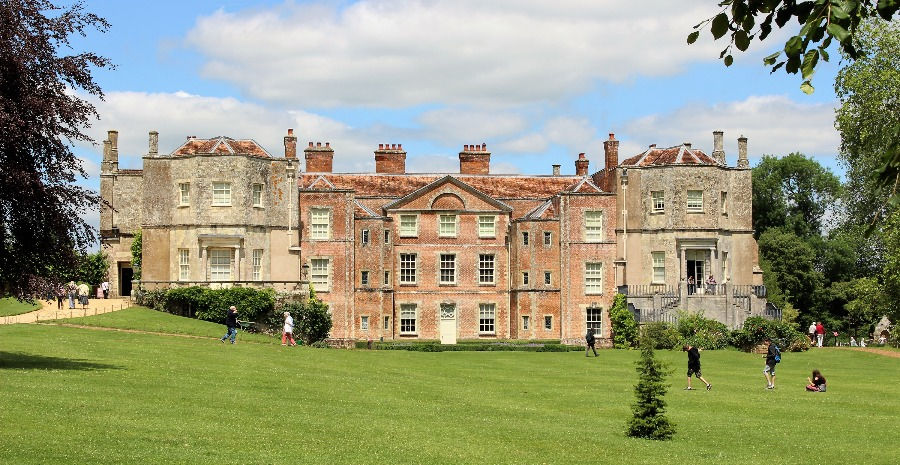
The roads to Mottisfont are mostly narrow and winding, passing though some of the most expensive villages in the UK, with their traditional village greens, thatched cottages and moss covered walls. Mottisfont itself has a beautiful 12th century church, chocolate box houses, and tree-lined avenues intermingling with the River Test and its tributaries which flow through it, these chalk streams gently meandering through the village with clear running water and soft grassy banks.

Mottisfont Abbey is the grand house of the village, the stately home that manages to make the other properties look inferior despite their beauty. With its well-proportioned main house, fashioned from the old priory, its grounds with massive trees and subtle statues, walled gardens filled with roses and large landscaped lawns, Mottisfont is the jewel in an already well bedecked crown.
A BRIEF HISTORY OF MOTTISFONT
The site's name comes from an underground spring, or font, and it was around this that the community would hold meetings or ‘moots’.
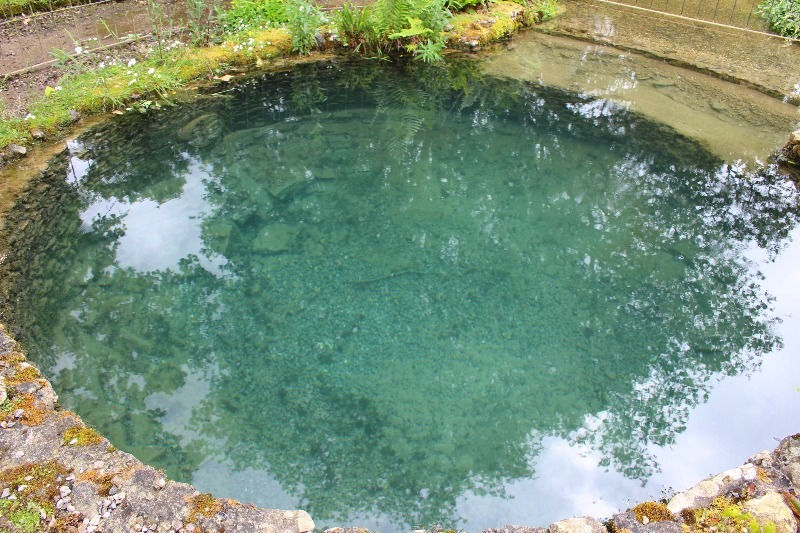
An Augustinian priory was founded on the land in 1201 by a beneficent local businessman keen to show off his piety and wealth.
Pilgrims would visit on their way to nearby Winchester Cathedral as it is said that the finger of John the Baptist was the relic kept to entice them there.
Dissolved by Henry VIII in the late 1530s, the priory was given to Sir William Sandys, who turned it into a family home without demolishing the priory, instead turning the chancel into the main body of the house and adding wings on the sides.
The house changed hands several times over the years, being adapted and modernised until it ended up in the hands of Maud and Gilbert Russell who bought it in 1934 and who modernised the house to give it the neo-classical look that it still retains.
Under their guardianship it was a centre of politics and arts, with visitors including Ian Fleming, the author of James Bond, and famous local artist Rex Whistler who died in Normandy just after the D-Day landings.
Famed Russian mosaicist Boris Anrep produced some of the mosaics which can still be found in the house and gardens, including one of an angel with Maud’s face, as they were having an affair.
MOTTISFONT GARDENS
The priory gardens were originally all watered by the font, and records from 1340 show that the font supplied two watermills, two gardens, two courtyards, an apple yard, pasture, meadow, tannery and dove houses. The famous walled gardens date from 1750, with the farm yard being constructed between 1740-1791 and being used for mass scale vegetable production. By the late 1800s the gardens were extensive and were described as being “impossible to praise too highly” by a journalist from The Gardener magazine.
The gardens fell into decline in the 1900s, but by 1960, once the house was owned by the National Trust, the gardens were developed over time to hold the Graham Stuart Thomas collection of old fashioned roses.
Said to be the most famous of all British rose gardens, which is up against some stiff competition, the rose gardens at Mottisfont were created in the 1970s and 1980s to hold the national collection of ancient roses, and unusually for the time, they were under planted with a border of herbaceous perennials to keep the gardens full of colour from Spring to Autumn.
The River Test flows through the grounds, wide and shallow, full of fat fish and streaming weeds that just seems to be made for messing around in boats.
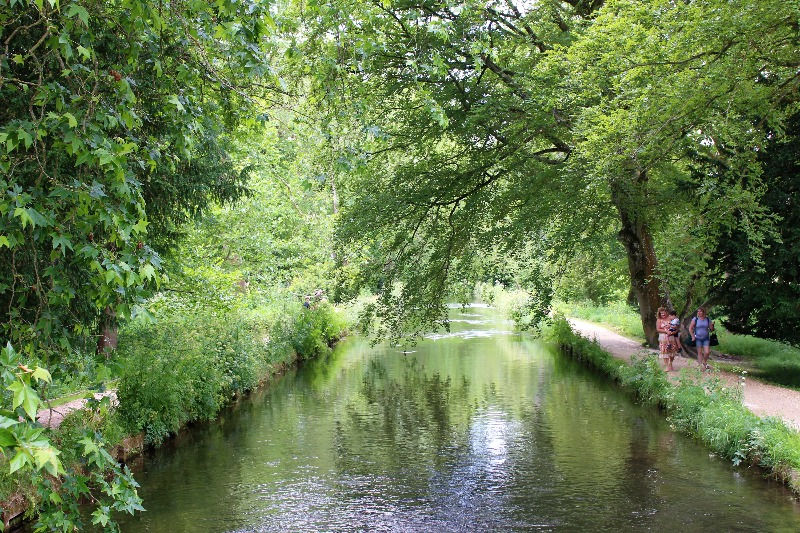
Next to the river is a London plane tree, the largest specimen in the UK which dates back to the mid-18th century and which is often propped up by boughs of wood to keep the heavy branches in place.
A rose covered bridge crosses the river to marshy overgrown lands beyond, a winter garden provides colour in even the darkest of seasons, meadows filled with wildflowers and insects are a gentle stroll away.
THE BEST TIME TO VISIT MOTTISFONT
Unlike modern varieties, these ancient roses tend to only flower once a year, for just a couple of weeks in June, depending on the weather. Although open all year round, the National Trust opens in the evenings too for the month of June, so that the maximum amount of people are able to visit the walled rose gardens in their short lived prime. Keep an eye on their website as they do update it to let people know when the roses are at their very best.
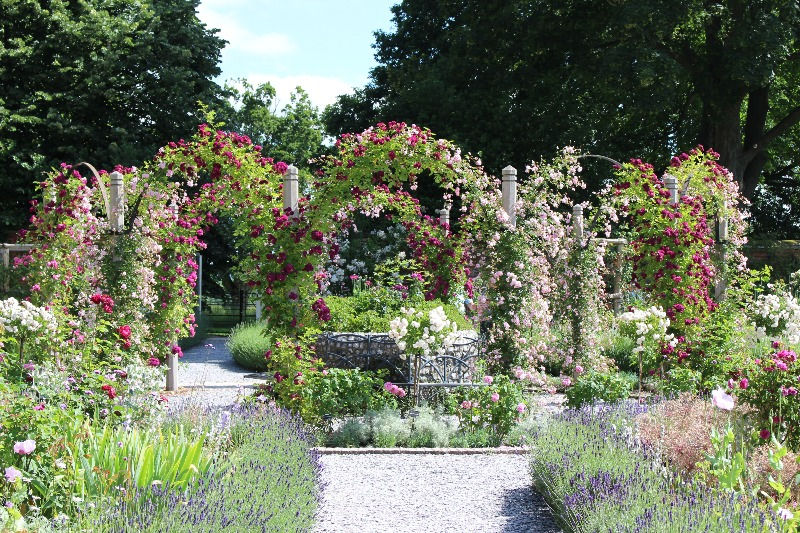
The experience is unsurpassable, as you walk through a small walled area lined with roses and clematis growing up columns, into a larger newly landscaped walled garden called the frameyard which has a central water feature, trellised walkways and flower beds, before you step through into the first of the truly sublime rose gardens.
At its peak, these gardens are filled with so many colours and scents that you don’t know where to start, as you follow the small hedges of lavender around the garden to take in the subtle features of fountains, pergolas, grassy lawns and bed after bed of roses and colourful perennials.
Many of these were selected by Thomas for their scent, structure and colour, with Agapanthus, geraniums and peonies in soft hues of blues, pinks and whites, with white foxgloves towering over them all.
There is a second walled garden leading off the first, with roses climbing up the walls, twisting around ancient trees with the blissful scent filling the whole garden until you are truly astounded by the beauty around you. Bees hum through the air, people tiptoe on the stepping stones that wander through the beds and near the rose covered walls, silence pervades interrupted by exclamations of delight by the visitors as they bury their faces into yet another velvety rose, or gaze upwards at a rose covered bower which climbs over their heads.
Varieties include the Rosa gallica officinalis which was brought to the UK from Persia by the Crusaders. There is the Souvenir de la Malmaison, a pink rose inspired by Empress Josephine’s famous garden, china tea roses and other varieties so ancient that Mottisfont probably has the only ones in existence.
MOTTISFONT HOUSE
The cellarium which is all that remains of the priory built in 1201. This would have been used as a storeroom by the monks
The rose gardens are not the only joy however. The 13th century cellarium of the priory still remains to be explored, a dark contrast to the sun filled gardens where shadows merge and sometimes the sound of monks chanting pipes out from hidden speakers in the stone walls as you walk around those ancient remains. Used to house the stores for the priory, it is the only fully intact room which remains from the monastic buildings.
Remnants of the priory can be seen in a few of the other rooms around the house, with glimpses of the original stonework in some of the rooms, Tudor beams in the attic and Tudor fireplaces in the kitchens.
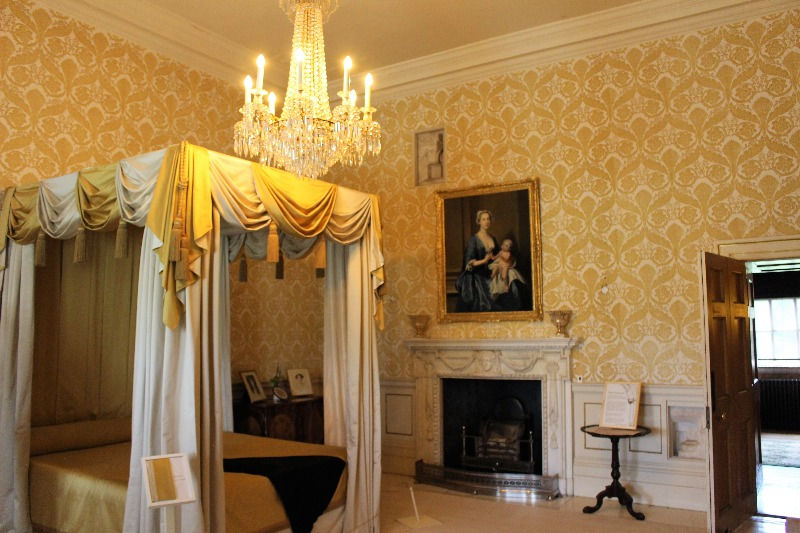
The house has changed a lot over the years, and each of the open rooms has a plan to show visitors how it looked as a priory, in Tudor times, and as it is now, showing how much it has diminished.
It is still a grand house and you can visit its stately rooms, some of which contain collections and art exhibitions. Part of the servants floor upstairs has recently been opened up, and visitors can see the bedrooms of the ladies' maids, as well as the roof beams added in Tudor times.
The huge room used for entertaining is decorated with some magnificent trompe d’oeil murals by Rex Whistler intended to reflect the origins of the building, and which were his final piece before he was killed in action just after the D-Day landings. In fact he was painting the murals on 3rd September 1939 when he heard the announcement of war on the radio and he has written it high up on the ceiling. A wonderful white morning room which houses many works of 20th century art, including works by Lowry, is a must see.

As with any National Trust property, the house has cafes, gift shops, and plenty of signage telling people where they can and can’t go, and much of the freedom that visitors experienced in visits of twenty years ago is long gone, with paddling no longer allowed and no more picnics on the front lawn.
For those few weeks in June however, none of this matters as the visits to the rose gardens and those old fashioned roses create a wonderful blend of nature and history combining to give a truly memorable historical experience.
VISITING MOTTISFONT
How to get to Mottisfont
Postcode: SO51 0LP
what3words: firework.kebab.wanting
Public Transport: There is a train station in Mottisfont village, with direct trains from Salisbury with a 15 minute journey. Tickets cost about £5.80, unless you book in advance, which makes them far cheaper. There is a 20 minute walk to get to the house from the train station. There are also buses that leave from Romsey.
Parking: If you are driving, there is a large National Trust car park which is free for members to use.
When is Mottisfont open?
Monday to Sunday
Garden 9am - 5pm
House 11am - 5pm
Mottisfont is closed on some public holidays and opening times can vary so check the website before you leave.
How much does it cost to visit Mottisfont?
Adults £16.50
Children £8.25
Family tickets and concessions are available
Free to National Trust members
Are there any facilities at Mottisfont?
There are two cafes which serve full meals and drinks as well as several ice cream shops. There is an extensive gift shop and a well stocked garden centre, which sells their heritage roses amongst other plants.
Mottisfont for Kids
Mottisfont is a great place to take kids for a day of nature, country walks and heritage -
There is a play park and a water play area over the bridge opposite the house.
The site is pushchair accessible with wide paths and no steep hills, although pushchairs cannot go inside the house.
The house regularly runs trails and events for children. It also holds open air theatre and other events which are targeted at children and adults.
There are two cafes, ice cream shops and picnic benches around the grounds.
Access at Mottisfont
There is a golf cart available to take people from the entrance to the rose gardens. Wheelchairs and pushchairs can go everywhere in the grounds, but will not be able to access all of the house.
Which is the nearest town to Mottisfont?
Salisbury is the nearest town for visitors to the area. See our Salisbury City Guide for details on how to get to Salisbury, locally owned accommodation, restaurants and shops, further places to visit and things to do.

































Comments